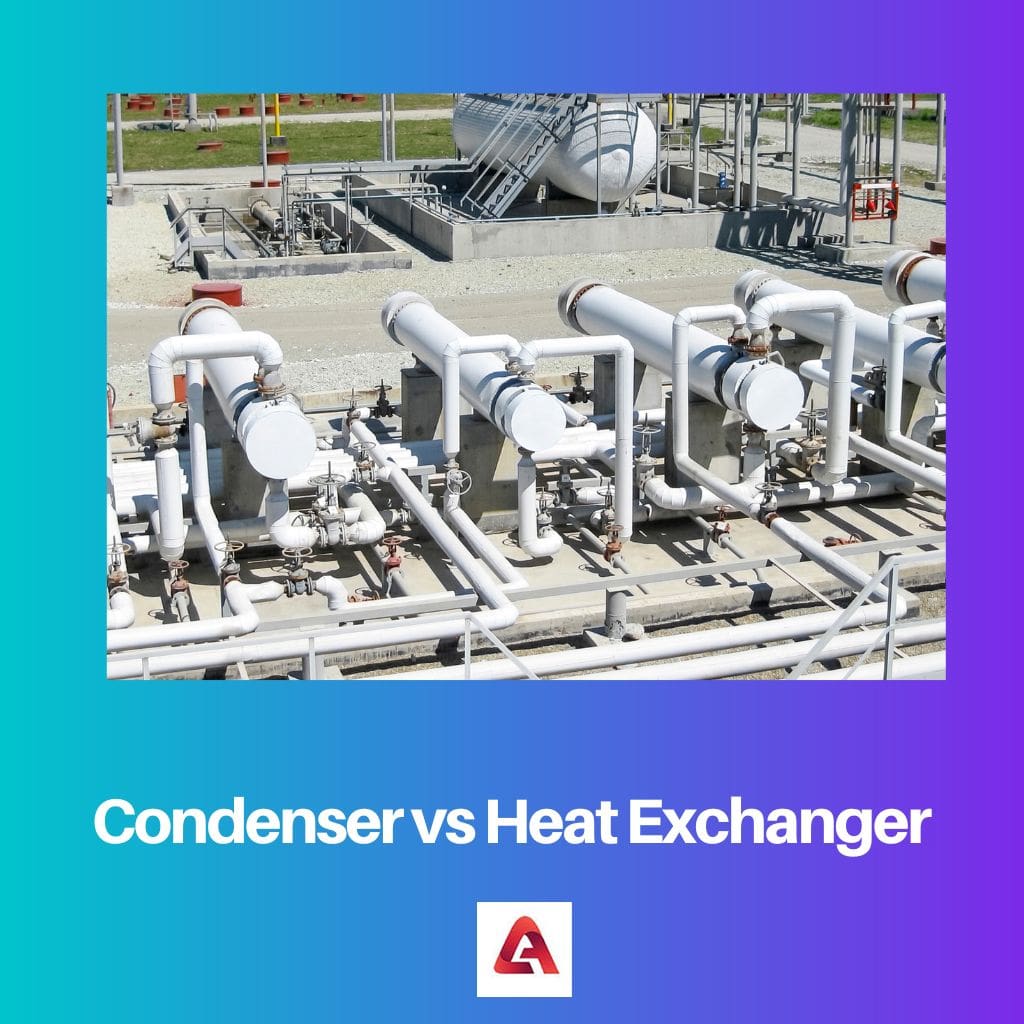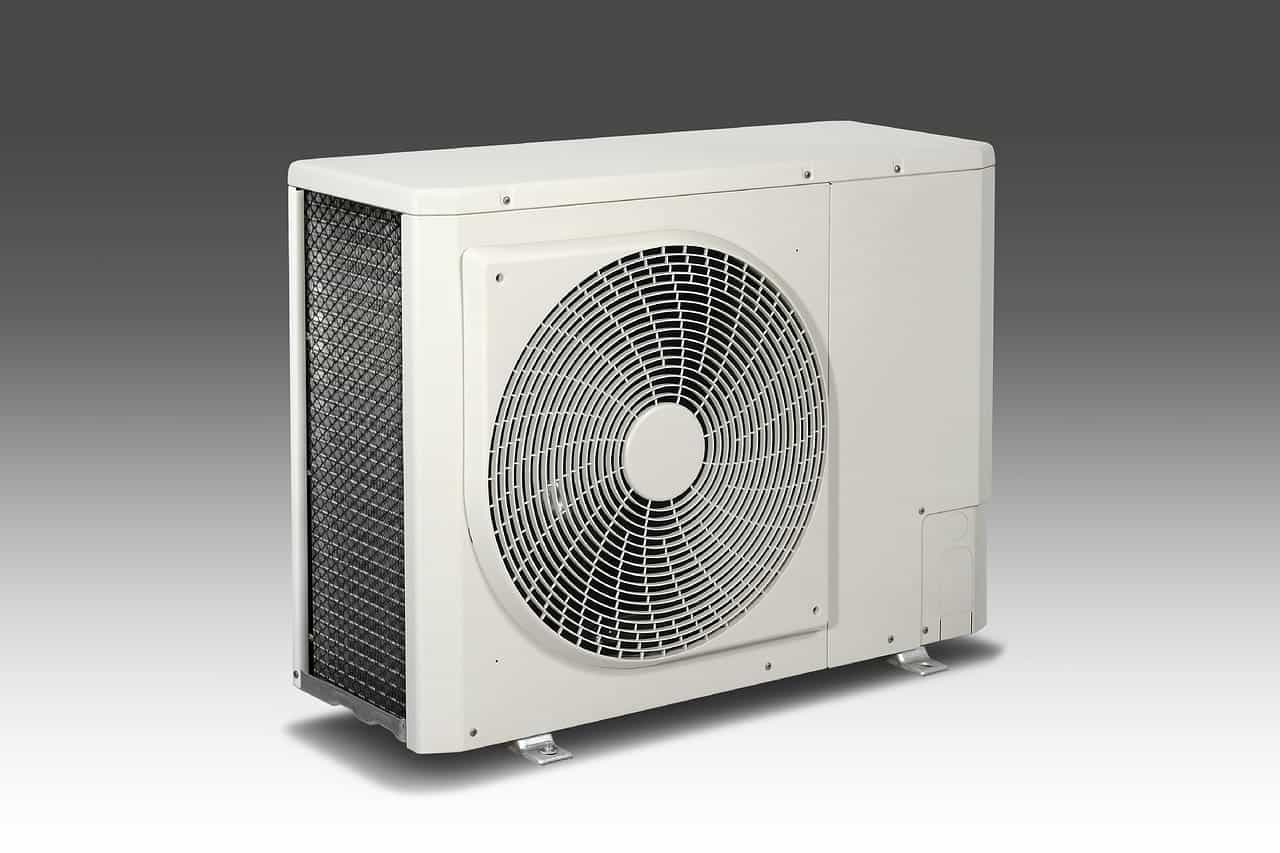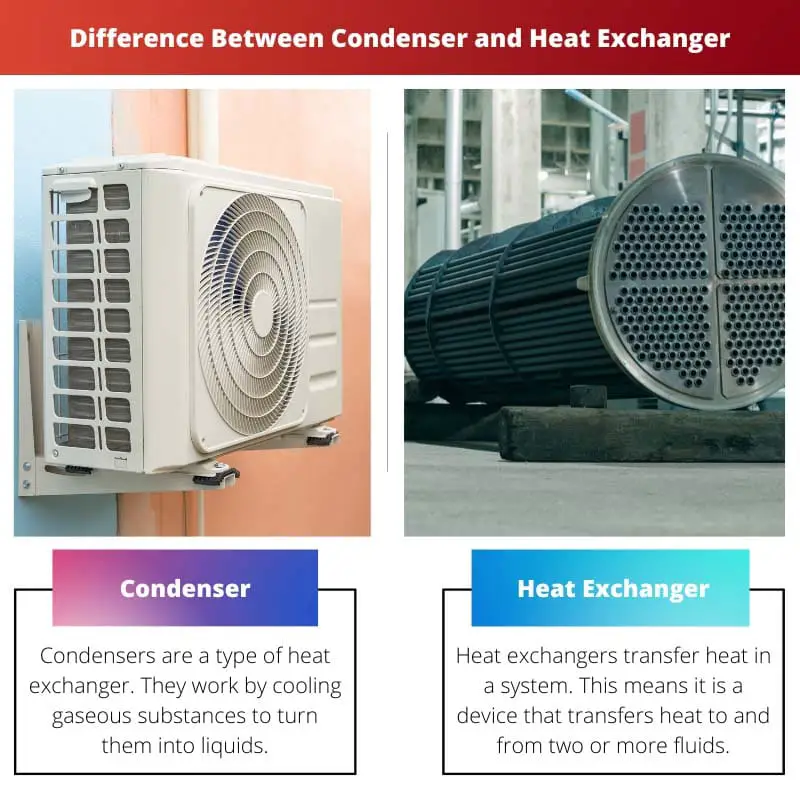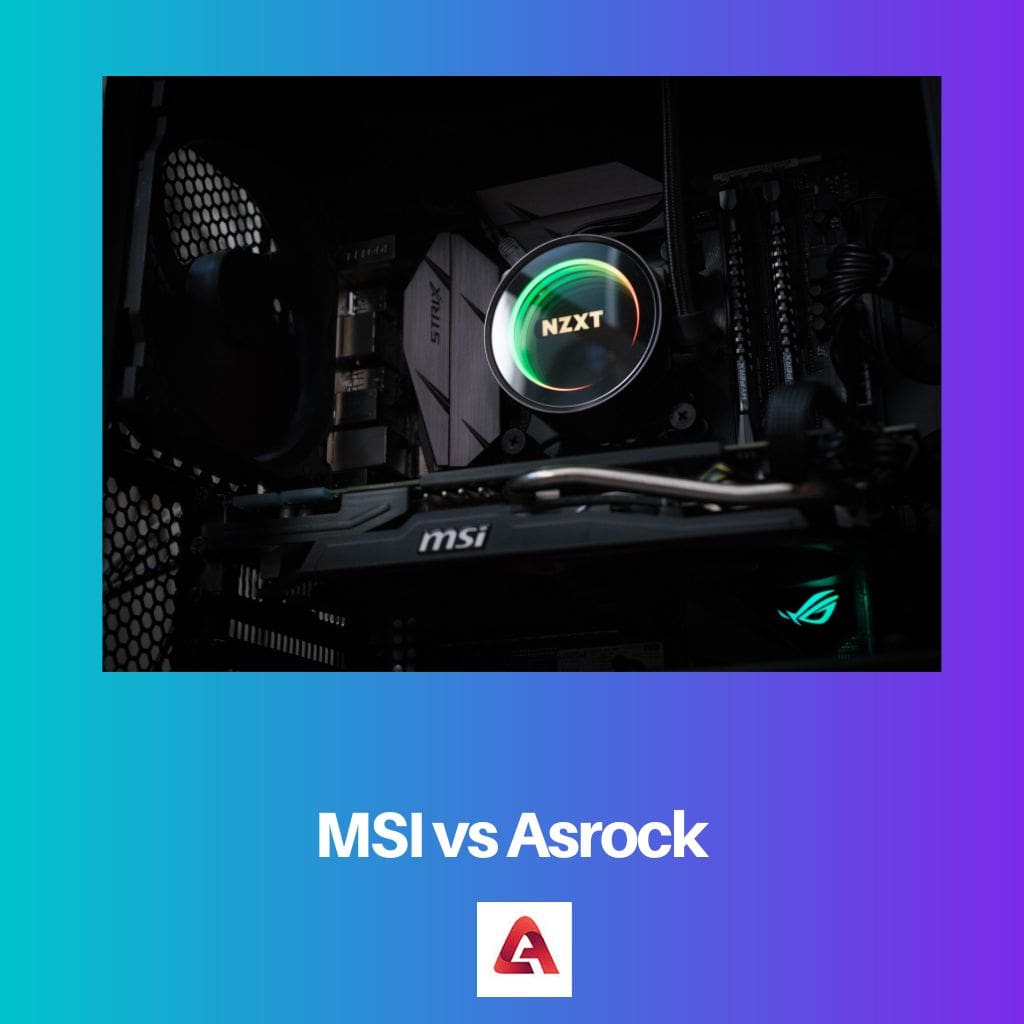Condensers are electrical devices that change liquid to gas phases of fluids. Heat exchangers allow the transfer of heat energy from one fluid to another by taking advantage of the temperature difference between the two fluids.
Since they transfer all the heat in one direction, condensers are more efficient than heat exchangers.
Key Takeaways
- A condenser is a device that cools and condenses a substance from its gaseous state to a liquid state, used in refrigeration and air conditioning systems.
- A heat exchanger transfers thermal energy between two or more fluids without mixing them and is used in various industries for heating and cooling purposes.
- Condensers specifically handle phase changes from gas to a liquid, while heat exchangers facilitate temperature regulation between fluids in various applications.
Condenser vs Heat Exchanger
The difference between the condenser and a heat exchanger is that condensers convert steam into a liquid state. On the other hand, heat exchangers recover the heat produced during the process of converting steam to liquid. Depending on their physical state, substances can be altered in many other different ways.

Condensers are a type of heat exchanger. They work by cooling gaseous substances to turn them into liquids.
The latent heat from the substance is released during this process and shifted into the surrounding space. A condenser contains surrounding air or cooling water as coolant.
Heat exchangers transfer heat in a system. This means it is a device that transfers heat to and from two or more fluids. Heat exchangers can be used to either heat or cool, depending on your needs.
A rigid wall separates the fluids to prevent them from being mixed or coming into direct contact.
Comparison Table
| Parameters of Comparison | Condenser | Heat Exchanger |
|---|---|---|
| Phase Change | By condensing the gaseous phase, the liquid state would be created. | The material is kept hot or cool without creating phase shifts by the heat exchanger. |
| Configuration | A condenser has baffle plates installed left and right. | A heat exchanger is positioned horizontally and at the bottom. |
| Levels | The condenser doesn’t have a liquid level meter or a water level adjustment port. | Coolers, such as heat exchangers, have a liquid level meter and an adjustment port for changing the water level. |
| Inlet/Outflow Tubes | The outlet tube of the condenser is situated at the bottom of the vessel, and its diameter varies greatly. | On top of the vessel is where the gas is input and exited, and the tube size is nearly the same. |
| Invention | The first scientific condenser was built by Swedish-German chemist Christian Weigel in 1771. | In 1973, DAF Vehicles of Eindhoven, Netherlands, used the first heat exchanger, a turbo-intercooler. |
What is Condenser?
Condensers, also called AC condensers, are the parts of an air conditioner that either discharge heat or collect it. It depends on the season.
Split air conditioners and heat pump both utilize the same condensers, which means they are interchangeable. The condenser cabinet, in its most basic form, has a condenser coil, a compressor, a fan, and a variety of controls.
Condenser coils may be formed of copper tubing covered in aluminum fins, or they can be manufactured wholly of aluminum to ensure that heat is transported as rapidly as possible.
As a result of its compression, the compressor pumps hot gas containing the refrigerant to the coil.
The condenser undergoes a cooling process, converting the refrigerant into a warm liquid that is sent via a conduit into the evaporator coil, where it expands and cools as a result of the expansion.
Heat pumps provide heat by pumping hot gases directly into the evaporator coil. Refrigerators are a common example of condensers that remove the heat of the internal system and distribute it to the exterior air.
Another known device that has a condenser is an air conditioner. industrial chemical processes including steam power plants, distillation, and multiple other heat-exchange systems use condensers.

What is Heat Exchanger?
To transfer heat between two media, heat exchangers are used. Gases, liquids, or combinations of these may be used.
If there is a solid barrier between the media, mixing may be prevented, but if there is direct contact, mixing may also be prevented.
Heat exchangers can be used to transfer heat from one system to another where it can be used effectively and increase the efficiency of the system.
The waste heat from a gas turbine that generates electricity can, for example, be transferred to a heat exchanger that boils water to drive a steam turbine so that more electricity can be generated
(this is the concept behind combined cycle gas turbines).
In addition, heat exchangers are commonly used to heat cold fluids entering heated process systems using the heat from the hot fluids leaving the system.
Therefore, the incoming fluid does not require as much energy to go from ambient to working temperature. Depending on their use, heat exchangers are designed differently.
Different kinds of them may have different functions, come in different shapes and sizes, and be used in different ways. There are four different types of heat exchangers: Shell, Double Tube, and Tube Heat Exchangers.

Main Differences Between Condenser and Heat Exchanger
- When a substance is condensed using a condenser, its phase is changed, whereas when it is heated, it is not. Between a heat exchanger’s materials, you can transfer heat between liquids and gases, between solids and gases, or between liquids and gases.
- Condensers convert steam to liquid form while heat exchangers recover heat that’s produced during the process. Heat exchangers are devices that collect the heat produced in the process and return it to the process.
- Condensers change the state of fluid from liquid to vapor, while heat exchangers are used to recover heat. In this device, heat is transferred from one state to another, from one that has a high temperature to one that has a low temperature.
- Condensers apply energy to cold gaseous substances and convert them into liquids, whereas heat exchangers transfer it among two or more liquids.
- Condensers are found in refrigerators, while heat exchangers are found in coolers.






